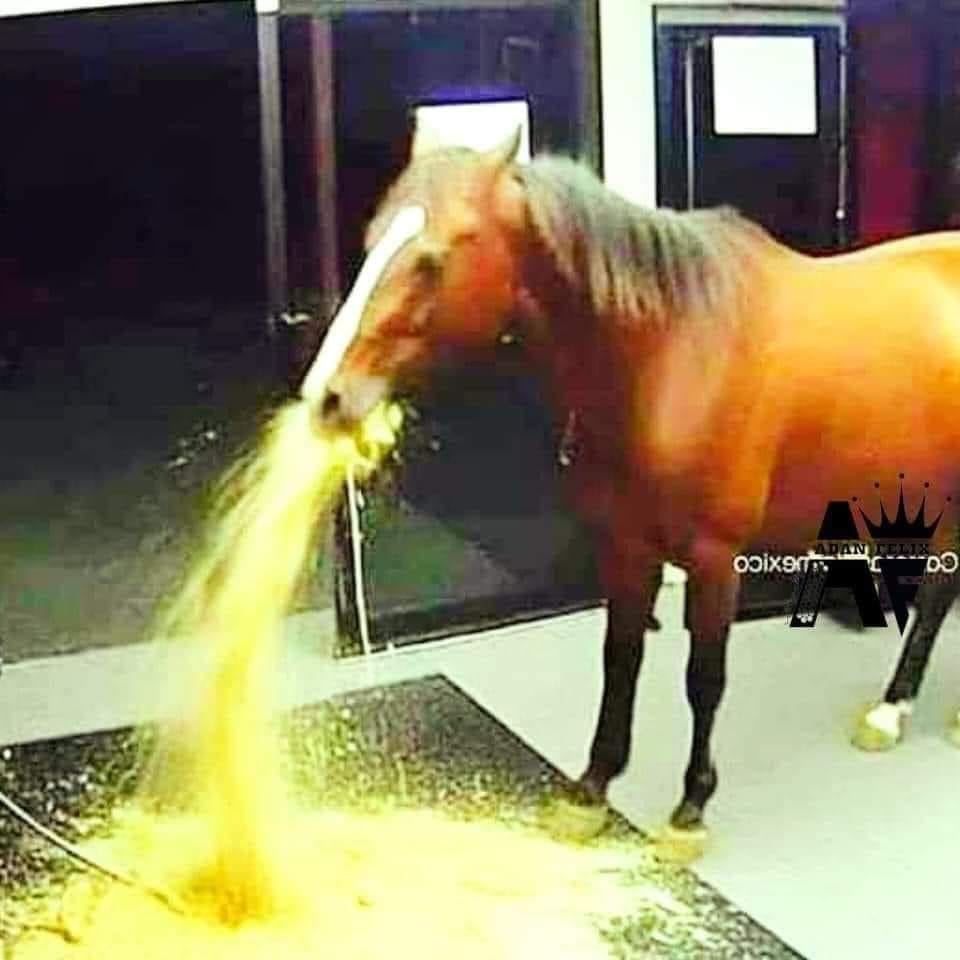tbf, it’s too specialized. They’re heavy so they can hurt through armor, which makes them slow. Terrible weapon vs an unarmored opponent, who can more easily just get out of the way or stay out of your reach.
A spear is at least good everywhere but indoors.
Like, what is the absolute last medieval weapon you would ever want if you were fighting 3 unarmed guys? All fast, all know what they’re doing. I’d say mace is solidly last.
Now, are they all wearing heavy plate armor like knights? Then mace becomes really, really good, it’ll break your bones through that steel, dent the steel inward so it compresses your body and the joints stop working properly, all sorts of shitty things. And you’re too slow to get out of the way.
source: I like maces.
I’ve always found them the most scary. If someone has mastered one, able to control and time the weight, opening up opportunities for blows, you’re fucked. A light blow with a blade or spear, you’re taking shallow damage and can scamper back. But with a mace? You’re off-balance now or quite stunned and that’s exactly what leads to the skull being crushed in a second later.
So, sure they’re slower and harder to land, but patiently, just one good hit and it’s game very quickly and violently over. Not to mention, the wielder doesn’t have to worry about their weapon being stuck in the dead guy.
Good plate armor was nowhere near as ungainly as many people imagine. A knight wearing a well-made suit would actually retain a surprising amount of agility and speed. The downside was that they obviously had to be custom made and were so expensive that only the wealthiest nobles could afford them.
While true, it doesn’t take much speed reduction to make a mace, or anything else, no longer miss you. Inertia is what it is, and the margins are not always large. The armor can deal with a lucky sword stroke, unless it’s really, really lucky. It can’t deal with a lucky mace stroke, you’re a casualty. Broken arm, leg, skull, something.
Otherwise maces wouldn’t have much of a point, anyway. Tiring to swing, shorter reach, yeah it hurts, but so does a sword if there’s no armor in the way. Takes minimal training, but so does a spear, and spearmen can stand in close order and poke. A maceman can’t do that, you gotta swing that thing. It’s not much of a poker, like say, a roman gladius is.
If there’s no heavy armor on the field, leave your mace at home. If there’s heavy armor, bring the mace. Battering through that shit is what it’s for.
All true, just want to add to it.
You can bring the mace anyway, just in case, as long as you don’t mind carrying it. One other major benefit is that the things could be dirt cheap because you don’t need good quality metal.
But if you want to hit people, and have a money and time for training, go for an axe. Pretty much all the advantages of a mace, but can cut on top (and usually poke too).
The other part of the equation is not getting killed, and usually the guys in heavy armor are good at killing you. Getting in striking range for a medium range weapon like a mace/axe/sword is damn dangerous, so a slower weapon like a mace or axe that’s additionally bad at defending because of a more distant point of balance means a much increased risk to your life. So if it’s one on one, you should really think twice about trying to getting that lucky strike in.
So as a mace guy I should just follow around some dude in armor and we just go fuck up everyone who also is wearing armor
Even if you’re armed with the choice weapon, and skilled, 3 knights on foot looking to fuck you up are gonna do so lol. Those guys were brawlers more than anything else
A recurve bow and a horse.
But yea, probably accurate. lol
Maces tended to be lighter and shorter than equivalent swords.
Maces aren’t as good against unarmored opponents, because unarmored opponents bleed and get incapacitated from a few well placed cuts. Swords tend to balance their weight closer to the handle to offer precision to make those cuts.
Maces specialize in delivering nearly the entire energy behind a strike. They were balanced to the tip of the weapon for that reason. Which is great against cut resistant armor due to energy transfer. Note that this places maces utility well before invention of plate armor.
If it’s heavy and slow, it’s not a weapon. Slow weapons kill their weilders. Rare armor rendered the user so slow as to let you swing in a game-like “lumberjack dealing with a stubborn log” fashion. There are plenty demonstrations around that show how fast and deadly an armored swordsman is.
The statement about spears indoors is game logic. The variability in spears and swords designs is such that most swords and spears would be equally dogshit indoors, but those that wouldn’t would all work quite ok. In a narrow, defensibly built passageway, thrusting attacks are nearly the only attacks available to combatants. A short spear then can offer a good deal of utility that sword wouldn’t, and vise versa. Short maces are nowhere near being useless there either.
Couple points in there I could argue, but it’s fair enough. Source for maces generally being lighter than equivalent swords? My experience has been very much to the contrary, though I’ve never held an actual historical artifact, only replicas.
For example, https://www.clevelandart.org/art/1916.1589
It being from 16th century, it’s likely the heavier variant for cavalrymen (which the description kinda confirms). Even then it weighs only 1.6kg.
Some sword examples:
- https://www.clevelandart.org/art/1916.1600. - 1.76kg
- https://www.clevelandart.org/art/1916.686 - 1.6kg
- https://www.clevelandart.org/art/1974.58 - 1.62kg
- https://www.clevelandart.org/art/1974.59 - rapier, 1.48kg
- https://www.clevelandart.org/art/1919.69 - 1.06kg
- https://www.clevelandart.org/art/1916.698 - 1.28kg
- https://www.clevelandart.org/art/1916.1099 - a very interesting case of 600g of weight
- https://www.clevelandart.org/art/1974.57 - 360g
Note the years and descriptions on the lighter swords. They are more of an everyday tool for civilians at that point. A regular club competed with those, probably very successfully.
I rather doubt a regular club competed with a fencing sword successfully, in hands of equal skill. That I’m afraid I will argue. It’s a question of speed and weighting. That heavy weighting towards the top you were describing earlier in a mace, and also present in a typical club or baton, has far more effects than merely focusing force over a smaller surface area. You also have the basic physics of moving a lever through an arc, and overcoming the intertia of the end of it, if you desire to change its direction.
My own training is mostly in actually using weapons, not academic understanding of them, and you’re entering my turf. lol
By compete I mean to compete in utility and general use, not in a duel. Fencing sword is of no use when you get whacked at the back of your head. It’s also relatively useless on a battlefield, from which I presume it occupied mostly the same space the clubs did - streets and roads.
I won’t argue on weight distribution influence. Sharp object balanced near the handle doesn’t need much of a swing to render my arms unusable. A mace simply cannot do that, its utility lies elsewhere.
PS: I would love to see a skilled fight using a thrusting sword and a mace. Thrusting swords don’t have a cutting edge, which makes it possible to grab and grapple them aside. I imagine the moment your opponent grabs your sword and swings their club presents quite a pickle.
I feel like it would be fairly easy to leap backwards so long as your back isn’t to a wall. The force of the leap alongside you yanking your sword backward should free it from most grips, I’d think. I’m just spitballing though, I’ve never actually tried to seriously grab any kind of thin blade, much less a fencing sword of some sort. I guess you could torque it in your grip to improve your control, I don’t know how much of an effect this could have. I doubt it’d go much like the (fantastic) finale scenes of Rob Roy though, just because your asking your forearm muscles to combat a pretty hefty amount of momentum via mostly friction, which just isn’t very likely to work imo.
Unless you had an equivalent amount of forward momentum yourself, coming in with a massive lunge to maintain distance against the retreating opponent. That’s pretty all-or-nothing though. If instead of leaping backwards he moves into you, you have no cover (both of your hands are in use at this moment) against a potential fist or elbow to your face from his free arm, with the extra momentum of the two of you approaching each other.
By the way, I never thanked you for the corrections to my understanding, so thank you. This is admittedly not the first time I’ve had to take my spankings from an educated academic, I am a bit of a poster child for replica weapons being frequently inaccurate and thus teaching mistaken impressions. I do try to remember this, but it isn’t always easy. I do have a strong appreciation for accurate understanding of history though, so thank you for taking the time to write up corrections and provide sources.
Oh, I’m not an academic, just an ADHD poster child. Historic weapons keep appearing on my radar for the past few years and I repeatedly find myself spending time on researching what I’ll never practice.
I try to find and share sources for that reason - they allow others to skip incorrect assumptions I made along the way.
tbf, it’s too specialized. They’re heavy so they can hurt through armor, which makes them slow. Terrible weapon vs an unarmored opponent, who can more easily just get out of the way or stay out of your reach.
There’s just one lesson in mace school: “come at them from behind”.
Walk softly and carry a big stick
I think most weapons, including lack of weapons, benefits from surprise attacks from behind.
not sure i agree people tend to wield baseball bats the same just swinging for the fences but a quick jab with the base or top is the most effective way to use them.
i think it’s all technique
A baseball bat is a two handed club anyway. Maces are shorter and heavier.
What’s your opinion on flails?
The haft with a long chain and ball on the end is fantasy. However, I fought with one for a couple of years as a combat actor/choreographer and ren-faire reenactor and would say that the flail is a duelist’s weapon only. And in a duel its chief function is to remove your opponent’s shield.
A well placed flail strike will go around the guard of your opponent and potentially break fingers, hand, wrist, or arm.
You can also try to use it to disarm their primary weapon but it’s less reliable in this regard as it becomes a tug of war strength contest.
Use your flail to break their hand and make them drop their shield and then drop the flail and draw your side sword or whatever else you happen to have.
Too slow and clumsy of a weapon to fight against a group or near allies.
An even weirder one, a flail with a bike style chain: https://youtu.be/K5sPDbwr7EI
Here is an alternative Piped link(s):
https://piped.video/K5sPDbwr7EI
Piped is a privacy-respecting open-source alternative frontend to YouTube.
I’m open-source; check me out at GitHub.
Seems to me like a bearded axe does many of the same things while being easier to control and being more effective as a striking weapon, no?
Yeah pretty much, which is why the axe was actually used and flails as we know them are fantasy weapons. The flail has the intimidation and cool factor but otherwise I’d rather have an axe.
The flail might have more reach, but the longer the chain the slower the weapon and more skill required to land a blow.
One handed flails were never used in warfare. They were made for decoration. There was a 2 handed flail that couldn’t reach the user but it was still not very effective.
Hits really hard. Probably kinda hard to use. If I picked up a real one I’d probably end up giving myself a concussion somehow.
I guess I don’t know very much about flails… I thought they were more of a cavalry weapon irl, but I’d have to look that up. Unless it’s the old makeshift farm implement version that some peasants probably picked up at different points.
I’d put a pair of Sai behind the mace against the unarmed guys. Those things are useless, unless you know exactly what you’re doing. A mace is just an improvement on a warhammer, so even untrained, I have a pretty good idea of how to use it. A sledgehammer is similar enough.
deleted by creator
Modern conceptions of medieval warfare drastically overestimate the amount of usage that swords saw in battle. At least that’s a thing I’ve heard.
The sword was a sidearm. It was a trusty companion you had on you everyday to demonstrate your wealth and power and to be drawn in your defense if need be.
When it was time for battle, your sword would still be at your side, but in your hands would be some sort of polearm or perhaps an axe.
Also, commonly used but often forgotten about is a falchion. It was a sidearm that looked like a sword but did not require all the training in swordsmanship to be effective. Instead of being balanced like a sword to enhance the point control, a falchion was point heavy (like a machete) and swung like a hatchet.
I wouldn’t be surprised if technology was pushed towards ranged weapons like bows, crossbows, catapults, and trebuchets
I mean I’m sure there would be a good amount of swords or other close quarters melee units the keep the enemy at bay while everyone else is relatively safe from getting stabbed firing from a distance
I have no source just pure speculation
As far as my understanding, it was. Long bowmen were far more valuable because the costs associated with losing a knight was high. Infantry were given various polearms, and cavalry (or knights on horses) were given lances and spears. The kinetic energy from horseback functioned as good or better than trying to wind up swings of a weapon. Also human mobility is less than that of a horse before even accounting for armor, so being demounted from your horse mean almost certain death.
Swords were a last resort. A “running away is better” type of option. Being good with your sword is like being good with martial arts today - better to have it even if you may not use it.
The point wasn’t that ranged attacks or siege or cavalry weapons are more important than melee weapons, though depending on the battle or the century, that may well be true.
The point was that when it comes to melee, the weapons used by your infantry was never swords. Swords are prestige weapons, expensive and heavy, wielded by wealthy knights and nobility for ceremonial purposes, duels, or tournaments. The king cannot afford to equip a thousand infantry with swords (the way you see in movies like Braveheart or LotR), and even if he could, the infantrymen have neither the skill nor strength to wield them for an extended duration.
Swords weren’t the weapon of last resort. They just weren’t included in the loadout at all, of the soldiers engaging in melee combat. So what did they use? Spears. That’s probably why the OP says spears are king.
But take it with a grain of salt cause I don’t actually know anything about medieval warfare. It’s just a thing I heard.
Actually there are swords that were in fact peasant level weapons, because they were farm equipment like machetes are
No, swords were mostly civilian self defense weapons and backup weapons as pistols are nowadays (and, mind you, even nowadays where governments have the money to equip every soldier with a rifle and a pistol, they don’t).
The reason swords were not as widely used in battle as spears, axes, maces, polearms were is that these weapons are battlefield weapons and swords aren’t. Why depends on the situation and time period. Sometimes because they’re not as effective against armor, sometimes because they’re too expensive, sometimes because they required more training than a pointy stick.
Btw, there was an empire that widely equipped it’s armies with swords (through times) because it made sense with the rest of the kit, fighting style, enemies, etc. The roman legionnaires are most famously depicted with a gallius helmet, lorica segmentata, scutum pilum and gladius
human mobility is less than that of a horse
[Citation needed]
deleted by creator
Wow that’s a much more detailed reply than my un-coffeed brain can produce lol
Maybe I missed it but for long bows you said they delivery a lot of energy especially so on horse back but I remember reading archers would train for their entire life just because of the sheer upper body strength needed for the bow which I think is neat
An archer can hit a man 450-1000 feet away. What’s a man clad in 200lbs armor gonna do? All he can do is take it. So the armor was sloped and thickened. Relying on horse speed to make them harder to hit.
I mean Ik I said they had lifelong training for that upper body strength but not 450-1k feet strength
This post is a great TIL :)
For trebuchets at least, they were only siege weapons, took a long time to both assemble and fire. Though I must concede they were better than melee weapons for knocking down walls.
In Monty Python and the Holy Grail, as the Frenchmen start raining animals at the knights and they all turn and run, Lancelot (being the brave one) takes one last whack at the stone castle wall with his sword before joining the rest in retreat. Always loved that little detail.
Good to know. I just knew that they were just ranged so this is going into the “neat information that will in no way help me with my life” pile
Wasn’t the spear also one of the easier weapons to learn? Which is why a big part of a medieval army was made out of spear carriers?
Stick them with the pointy end.
From eight-plus feet away. That part is pretty important, you don’t even give them a chance to get close.
From what I understand spears popularity comes from
-
Being the easiest weapon to craft in prehistory, get a stick and sharpen the end to a point, add some plant fiber for a grip and boom you have one of mans earliest killing tools.
-
Spears have a great reach and can target pinpoint locations
-
With proper technique you can throw them as a limited range weapon
-
Can be wielded easily while managing a shield
-
Spears are probably cheaper to make too
In no way, shape, or form am I an expert in martial arts or combat. I would imagine however it depends on the situation. An army with spears and an individual with a spear are two very different things. Armys equipped with swords vs spears, spears win. Individuals fighting with a sword and a spear probably comes down to individual skill more than the specific weapon.
You might like this video, https://youtu.be/LX3n4XIwHZo?si=9KC7upiLOFaR0ddN
At 8:50 the guy says that traditionally one person with a spear was roughly as good as two equally skilled persons with a sword.
Here is an alternative Piped link(s):
https://piped.video/LX3n4XIwHZo?si=9KC7upiLOFaR0ddN
Piped is a privacy-respecting open-source alternative frontend to YouTube.
I’m open-source; check me out at GitHub.
I don’t take the opinions of modern “enthusiasts” seriously on this topic.
Professional warriors for thousands of years clearly saw a point to having weapons other than just spears, we simply don’t have the institutional knowledge anymore to be able to say things like that with a straight face.
Spears are tools, swords are tools, armor types are tools, but all our actual experts in their use and knowledge of the situations that make one superior to another are dead, and all we have are dorky amateurs fighting in the backyard with sticks and telling themselves “Well this is how it worked out for me, and I’m PRETTY SURE I’m as good as someone that spent their whole life training with and using these things to actually kill people.”
I don’t think that was his point. He’s simply saying that the benefit of reach and leverage makes it so that equally skilled and unarmored combatants would make it so you need 2 swordsmen to reliably fight a spearman.
That being the case doesn’t mean that they wouldn’t have multiple weapons for multiple circumstances, and it doesn’t mean that the appropriate armour wouldn’t impact it.
Finally, battlefield usage is a totally different situation as you have regiments with mixed skill levels.
I think the only thing he was trying to say is that if you have two guys with similar skill and fitness, unarmored, the guy with the spear has a large advantage.
Also, I think he’s a bit more than an Enthusiast. His resume is fairly impressive (https://www.matt-easton.co.uk/about).
Generally also beats a sword except in pretty specialized circumstances.
what about a spear with a mace on the end, truly unbeatable.
You mean a war hammer?
Wack hammer.
Ham er’?
I hardly know her!
Bec de corbin?
Bow > spear > sword (and shield, ofc) > whack.
Range ftw.
Mace became playstation














